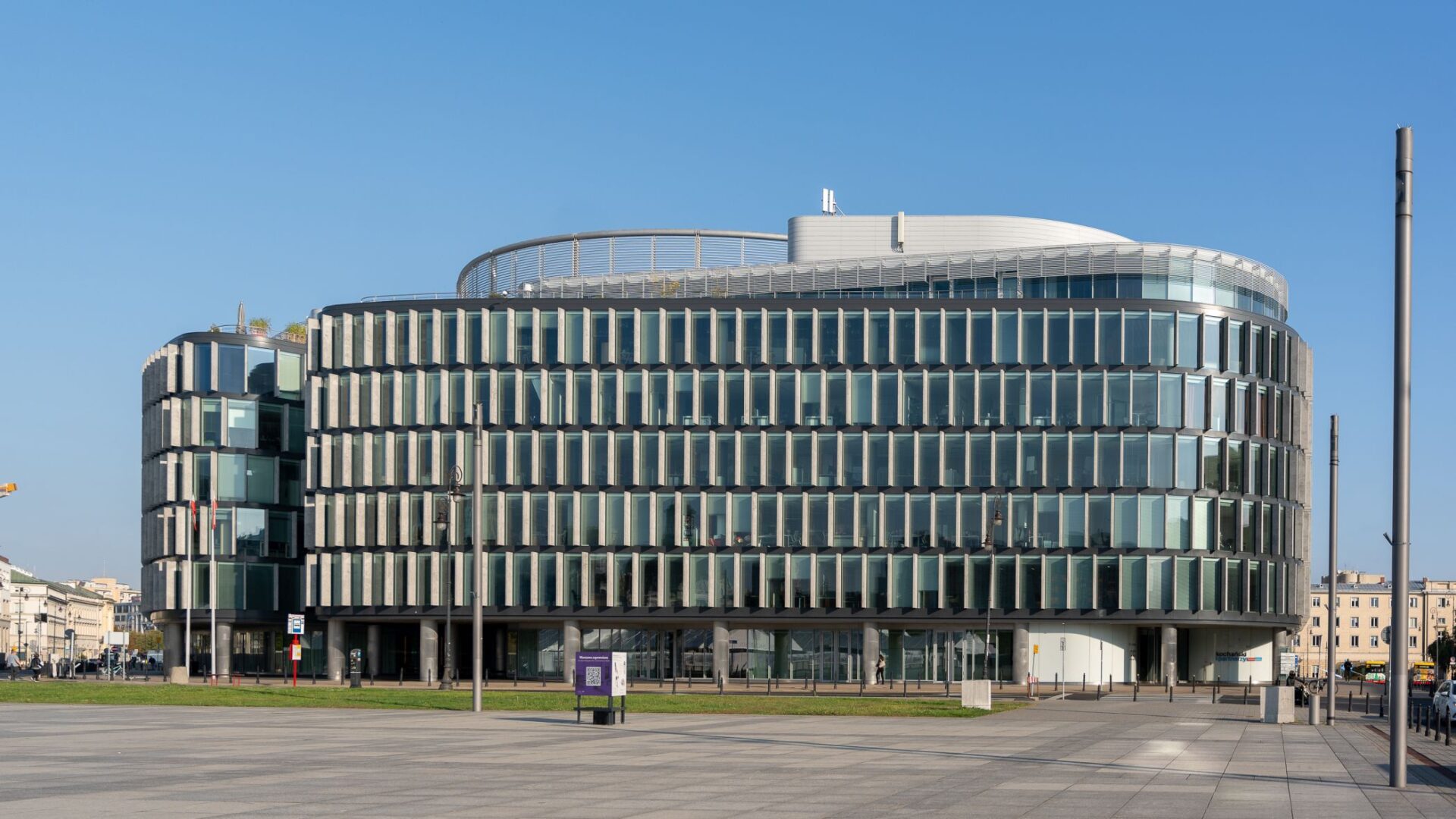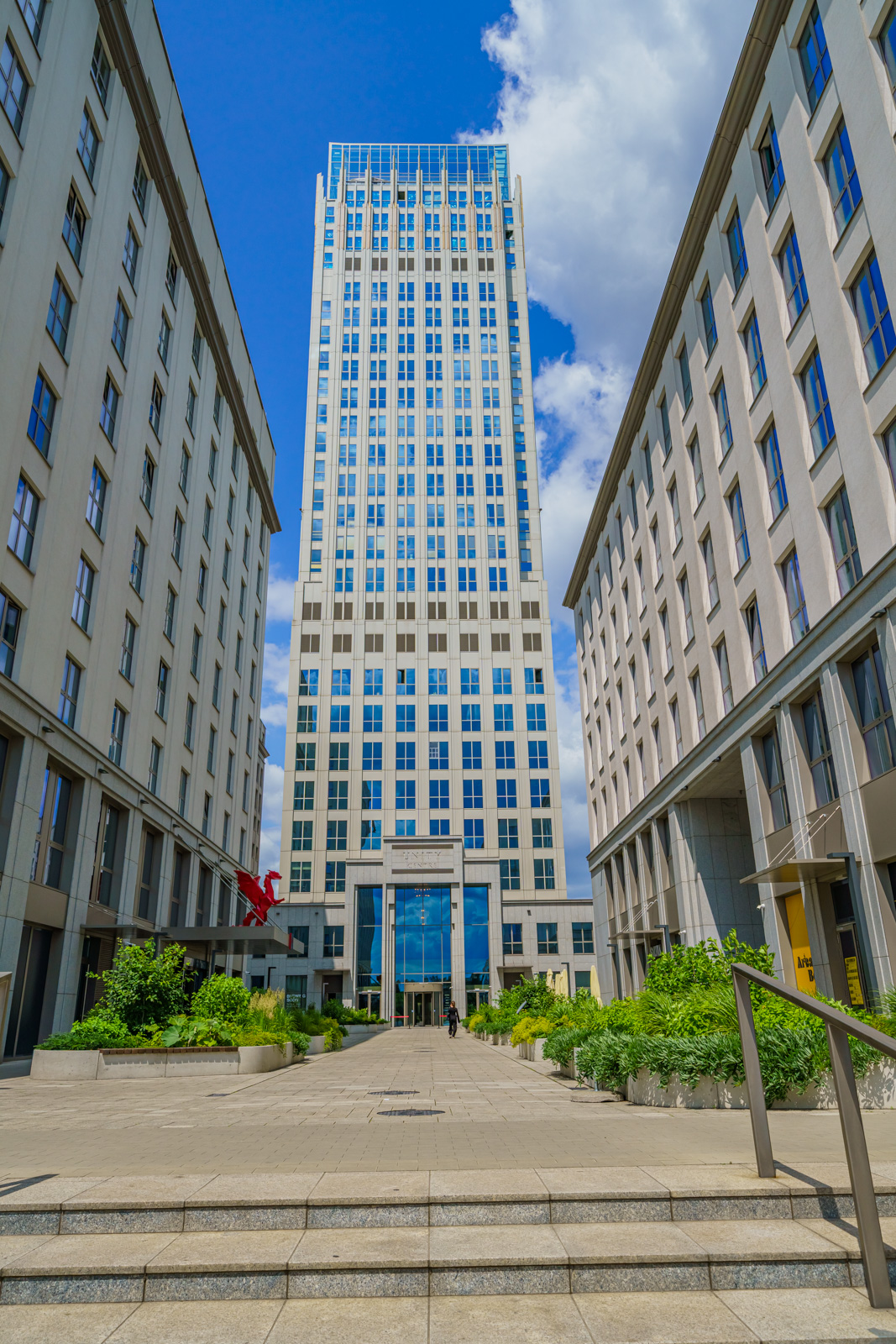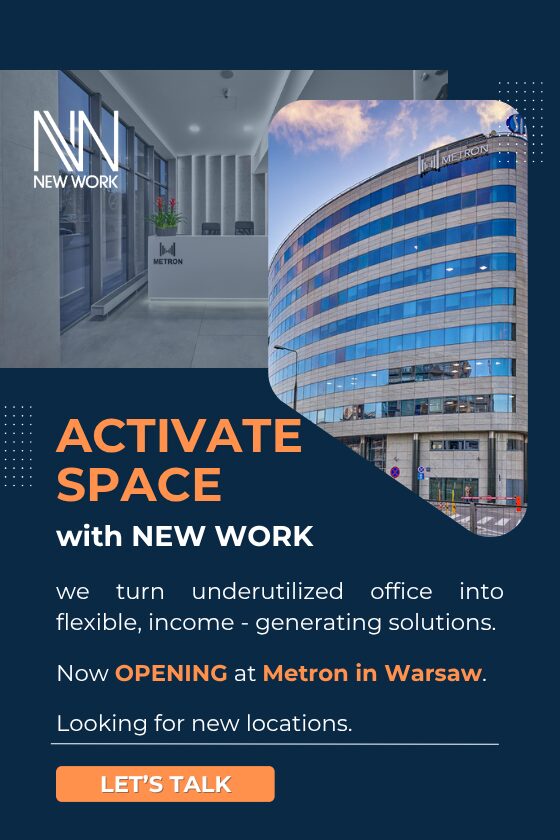Stable demand, low supply of new offices, and few vacancies—this briefly describes the current situation in the Warsaw market, says real estate advisory Walter Herz. Just under 11 percent of the office space in Warsaw, currently around 6.3 million sqm, is waiting for tenants. The average vacancy rate has changed little over the past year, but the differences in office availability depending on the location have deepened. Available spaces have decreased primarily in the city centre, where there is a shortage of offerings, and rental rates reach up to €29/sqm/month. In other parts of Warsaw, the selection has slightly increased (€13-17/sqm/month).
“Developers are showing limited activity in new projects due to caution and careful analysis of market absorption about new resources. At the same time, we are observing a growing trend of converting office buildings into residential projects, PRS, or dormitories, as well as a decrease in planned office space in new investments,” says Mateusz Strzelecki, Partner/Head of Tenant Representation at Walter Herz.
A Slightly Higher Number of New Offices Compared to Last Year
In the second quarter of 2024, Warsaw’s office potential increased by only 15,000 sqm of space, thanks to the completion of the Vibe A office building. In the first three months of the year, 49,000 sqm of offices were delivered.
In the first half of this year, only 65,000 sqm of space entered the Warsaw market, and plans for the entire year of 2024 indicate that a total of about 100,000 sqm of new offices will be delivered. It is worth pointing out that in 2023, new supply in the sector did not exceed 60,000 sqm.
According to Walter Herz, over 248,000 sqm of office space is still under construction in Warsaw. Projects underway include Office House (Towarowa 22), Upper One, The Form, The Bridge, Vena, CD Projekt HQ, Skyliner II Warsaw, Studio II, and modernizations of V Tower, University Business Center II, and G5 Prime Offices. Nearly 90 percent of the space under construction is in new projects located in the city centre and Wola near Daszynskiego Roundabout.
Mateusz Strzelecki notes that ESG-related criteria now have a significant influence on office space design. “A lot of greenery and the use of sustainable solutions to ensure environmental standards characterize both new buildings and renovated properties,” says Strzelecki.
Renegotiations Dominate Transactions
Demand for offices in Warsaw in the second quarter of this year was nearly 40,000 sqm higher than in the first quarter. Nearly 180,000 sqm of space was contracted. The highest demand was for offices located in the central part of the city and in Sluzewiec, where economic offers are available to companies planning to reduce costs due to the economic downturn.
“In recent months, we have seen an increase in demand for office space in Warsaw compared to the first quarter of 2024. Nevertheless, vacancies remain at a constant level. Minimizing costs associated with relocations and adapting spaces to new needs remains tenants’ priority,” says Mateusz Strzelecki. “In the rental structure in the Warsaw market in the last quarter, renegotiations began to dominate. We observed a sharp increase in these transactions, considering their share in the rental structure in the first quarter of this year, which saw the newest agreements”
The first half of this year, in terms of demand, closed with the same results as the first half of 2023. By mid-2024, nearly 320,000 sqm of space had been leased, about 2 percent less than the same period last year (326,000 sqm).
“Among tenants, large entities, particularly media groups, dominate, striving to bring employees back to offices full-time. However, most companies prefer a hybrid model that involves frequent office visits. IT companies continue to show great interest in new spaces, aiming to optimize areas and improve the quality of office space. Solutions supporting hybrid work, teleconferences, and collaboration among employees are key. Institutional tenants and state entities are also increasing their market activity, which is a result of decisions being unlocked after the elections,” says Mateusz Strzelecki.







